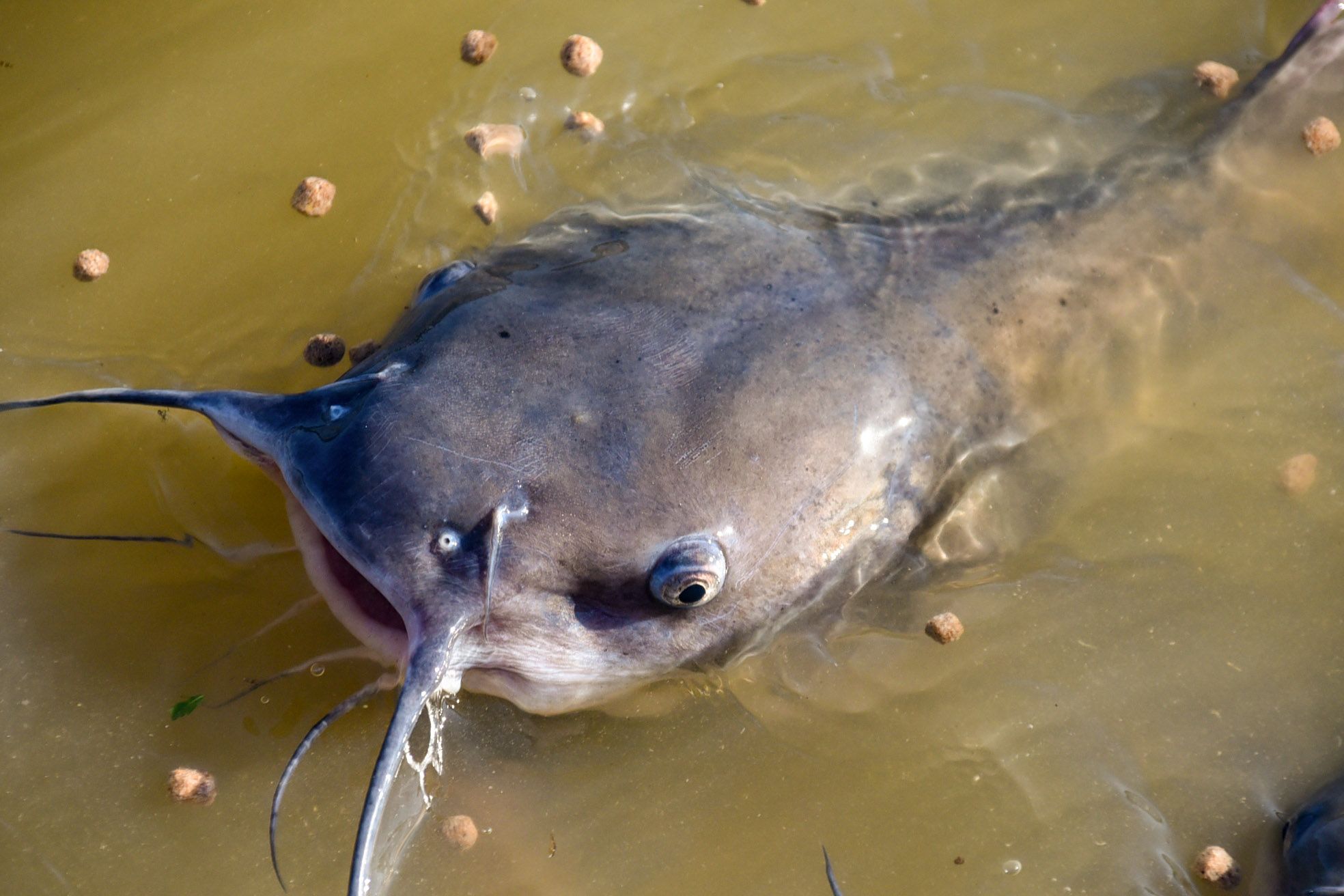Primary Spawn: Late May through June when water temperatures reach 70-75°F and stabilize; peak spawning occurs at 75-80°F; spawn timing approximately 2-4 weeks after bass spawn; one of the later spring spawners; spawning period extends 2-4 weeks depending on conditions
Spawning Habitat: Channel catfish are cavity nesters requiring protected spaces for egg deposition; preferred spawning sites include undercut banks, hollow logs and submerged timber, rock crevices and riprap spaces, old muskrat and beaver burrows, man-made structures (culverts, drain pipes, concrete blocks), depths of 2-10 feet in protected areas, quiet water with minimal current, dark, enclosed spaces preferred, substrate less important than cavity availability
Reproductive Behavior: Pre-spawn (Late April-May): As water temperatures rise toward 70°F, channel catfish move from deep winter holding areas toward shallow spawning grounds; males become territorial and search for suitable nest cavities; pre-spawn feeding intensifies as catfish prepare for spawn; males develop darker coloration and thicker heads during breeding season; females become heavy with eggs; excellent fishing during pre-spawn as catfish feed aggressively
Spawning Behavior: Channel catfish exhibit complex parental care unusual among game fish; male selects and defends nest cavity, cleaning debris from chosen site; courtship involves circling behavior and physical contact; female enters nest cavity and deposits adhesive eggs in gelatinous mass on ceiling or walls of cavity; one female deposits 2,000-21,000 eggs depending on size (larger females produce more eggs); eggs are large, yellowish, and stick together in cohesive mass; multiple females may use same nest site in succession; male immediately assumes guarding duties after egg deposition; female leaves nest area after spawning
Parental Care (Unique Feature): Male catfish provides extensive parental care—guards nest aggressively driving away all intruders; fans eggs continuously with fins providing oxygenated water circulation; removes dead or diseased eggs maintaining healthy environment; male does not feed during incubation period (7-10 days depending on water temperature); territorial aggression makes male catfish vulnerable to anglers fishing near nests; after hatching, male continues protecting fry in dense school for additional 7-10 days; fry school remains near nest site, appearing as dark moving cloud; male guards fry until they disperse (about 2-3 weeks after hatching)
Post-Spawn (Late June-July): After fry disperse, male catfish moves away from nest area often in depleted condition; post-spawn feeding period as males recover lost weight; excellent fishing as hungry catfish feed aggressively; fish gradually return to deeper summer patterns; summer feeding patterns establish as water temperatures stabilize above 75°F
Egg and Fry Development: Eggs hatch in 6-10 days depending on water temperature (faster in warmer water—typically 7 days at 78°F); newly hatched larvae are approximately 0.5 inches long with large yolk sac providing initial nutrition; fry remain in tight school near nest site protected by male; fry begin feeding on microscopic zooplankton after yolk sac absorption (about 5 days after hatching); young catfish form dense schools for protection; at 1-2 inches begin consuming larger zooplankton and aquatic insect larvae; rapid growth first summer reaching 3-5 inches; high first-year mortality from predation (bass, pike, larger catfish); males reach sexual maturity at 3-4 years (12-15 inches); females mature at 4-5 years (14-18 inches)
Spawning Success Factors: Water temperature stability critical—fluctuating temperatures delay or prevent spawning; availability of suitable nest cavities limits reproductive success—competition for prime sites; predation on eggs by other fish when male leaves nest briefly; male’s condition affects parental care quality; siltation can smother eggs; water level stability important—falling water can expose nests; pollution and poor water quality affect egg survival and male’s ability to provide care
Population Dynamics: Channel catfish populations generally stable with consistent recruitment; natural reproduction supplemented by stocking programs in some waters; multiple age classes present creating sustainable fishery; good survival rates once fish reach 8-10 inches reducing predation vulnerability; longevity (15-25+ years) buffers population against poor spawning years

